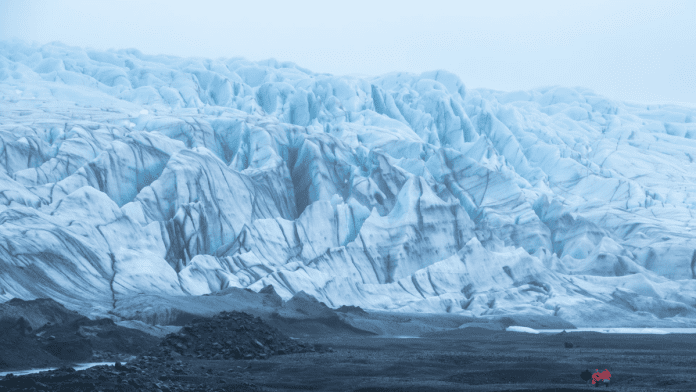🕒 Last updated on August 5, 2025
One of Earth’s most untouched ecosystems is now showing signs of major distress. Nearly a quarter of the glaciers on Heard Island, a remote sub-Antarctic territory of Australia, have melted. This is a big warning about how fast climate change is affecting even the most distant places on our planet.
A fragile paradise under threat
The remote location of Heard Island is approximately 1,700 kilometers north of Antarctica and 4,100 kilometers southwest of Perth. Despite being so isolated, the island has not escaped the rising temperatures caused by greenhouse gas emissions.
According to new scientific research, almost 64 square kilometers of ice have disappeared from the island since the year 1947. This means that 23.1% of its glacier-covered landscape is now gone.
The study was done by a group of scientists who are part of a major Australian climate research program. Their work focused on how climate change is affecting Antarctica and nearby areas. Even though Heard Island is hard to reach, scientists say it is extremely important because it is part of the Earth’s Southern Ocean climate system, which helps regulate weather and temperature patterns around the world.
The balance of the Earth is greatly aided by the ice on this island. When the ice melts, it doesn’t just change the island itself—it sends a signal that the planet’s climate is changing faster than we thought.
Tracking decades of glacier loss
The research team used a combination of old and new tools to study the island’s glaciers. They looked at topographical maps from 1947 and satellite images taken over several decades—specifically from the years 1988 and 2019.
With this data, they created a detailed “glacier inventory” that tracks 29 glaciers across the island. These glaciers were carefully outlined, and their size, shape, slope, and height were measured. Big Ben, the island’s enormous and active volcano, was used by the scientists to observe the movement of the glaciers and the impact of volcanic activity.
This glacier database helps scientists see exactly how much ice has been lost and how fast the glaciers are moving or shrinking. It also helps in understanding whether volcanic ash or rocks have made the melting worse by sitting on top of the ice and warming it further.
Even though Heard Island is covered in ice for most of the year—about 61% of the island is frozen—the ongoing melt is changing the landscape quickly. The researchers believe that this ice loss is almost certainly the result of human-caused global warming, especially due to the rise of greenhouse gases in the atmosphere since the 20th century.
The island is not just a block of ice. It’s a living, breathing environment with mountains, glaciers, and wildlife. Changes to the glaciers could harm many species that depend on the island’s cold conditions to survive.
Why this matters for the whole world
What makes this news even more worrying is that Heard Island is considered one of the last wild and pristine ecosystems on the planet. It is a UNESCO World Heritage Site, protected for its natural beauty and importance to science.
Because of its remote location and extreme weather, very few people have ever visited. In fact, the island hasn’t seen a human visitor since 2016. Despite this, climate change has still found its way there, melting the ice and changing the environment.
🎧 Alexa+ No Longer Just Listens—It Sells: Amazon Embeds Ads in Your Conversations
The island is home to Big Ben, an active volcano that rises to at least 2,745 meters, with new studies suggesting it may now be taller than 2,800 meters. This huge volcano dominates the island’s landscape and plays a role in shaping its glaciers as well.
Even though Heard Island has no permanent human settlement, the damage happening there is a sign that no place is safe from the effects of climate change. The loss of glaciers in such a distant and untouched location is a strong message to the world about how quickly things are changing.
The research was made possible through a major environmental program supported by Australia’s top climate research agencies. The goal is to understand how warming is affecting Earth’s coldest places—so that we can see what might happen elsewhere.
This glacier retreat is not just a scientific record. It is a clear sign that the planet’s climate is changing fast, and even places that humans rarely touch are feeling the effects.

